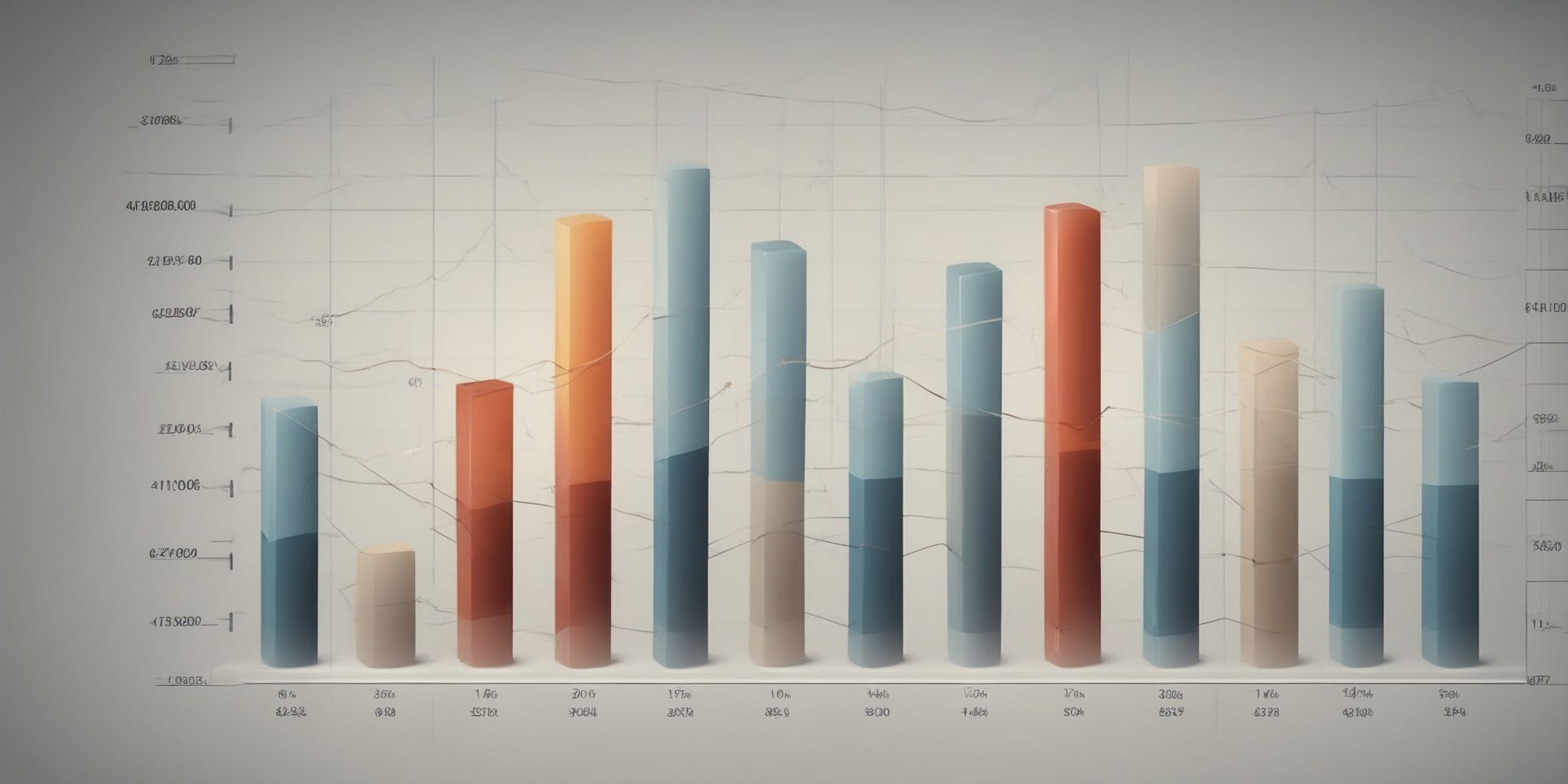Cutting Costs at Home: Simple Ways to Save Money
Hey there! Let's face it, money matters, and finding ways to cut costs without sacrificing our everyday comforts can sometimes feel like a daunting task. But fear not, my frugal friend, because we've got your back!
In this article, we'll delve into some practical and surprisingly simple ways to save money right in the comfort of your own home. From small adjustments to everyday routines, to clever hacks and money-saving tips, we'll explore a variety of strategies that won't cramp your style but will definitely give your wallet a breather. So grab a cup of coffee, cozy up, and get ready to discover some awesome and painless ways to slash expenses while still living your best life!
Assessing Your Expenses
Examining Your Monthly Bills
To start saving money at home, take a close look at your monthly bills. Utility bills often account for a significant portion of your expenses. Analyze your electricity, water, and gas bills to identify any areas where you can cut costs. Consider switching to energy-efficient light bulbs, which can lower your electricity usage. Additionally, evaluate your subscription services and determine if there are any you can live without. By reviewing and minimizing your monthly bills, you can free up extra money to allocate towards savings or other financial goals.
Reviewing Your Utility Bills
Reviewing your utility bills is an effective way to identify areas where you can save money at home. By carefully examining your bills, you can spot any unnecessary charges or excessive usage patterns. Look for opportunities to reduce energy consumption, such as switching to energy-efficient light bulbs or adjusting your thermostat. You can also consider water-saving measures like fixing leaks or installing low-flow showerheads.
Additionally, evaluate your subscription services to determine if there are any that you no longer need or can find cheaper alternatives for. Reviewing your utility bills regularly allows you to make informed decisions and take actions that can lead to significant savings over time.
Evaluating Your Subscription Services
One area where you can save money at home is by evaluating your subscription services. Take a close look at the recurring monthly fees you pay for various platforms and consider their value. Are there any subscriptions you hardly use or could live without? Canceling those can free up extra cash each month.
For example, if you rarely watch movies or shows on a particular streaming service, it may be worth unsubscribing. By trimming down on unnecessary subscriptions, you can reduce your monthly expenses and put that money towards more important things.
Tracking Your Spending
Tracking your spending is a practical way to manage your finances and save money at home. By keeping a record of your expenses, you can identify areas where you can cut back and make adjustments. Here are some actionable tips for tracking your spending:
- Utilize budgeting apps or tools to easily track your expenditures.
- Keep a log of your daily expenses in a notebook or spreadsheet.
- Categorize your spending to see which areas can be reduced.
- Set spending limits for different categories and stick to them.
- Regularly review and analyze your spending patterns to identify areas for improvement.
By actively tracking your spending, you gain valuable insights into your financial habits and can make informed choices to save money.
Using Budgeting Apps and Tools
One effective way to save money at home is by utilizing budgeting apps and tools. These digital resources provide a convenient and user-friendly platform to track and analyze your expenses. By categorizing your spending, setting budget limits, and receiving alerts, you gain greater control over your finances. Some apps also offer features like bill reminders and automated savings, making it easier to stay on top of bills and build up savings.
Whether you prefer a simple budgeting app or a comprehensive financial management tool, finding one that suits your needs can help you make informed decisions and identify areas where you can cut back on expenses without sacrificing your financial stability.
Keeping a Log of Daily Expenses
Keeping a log of your daily expenses is a practical way to save money at home. By recording every purchase, you gain a clear understanding of where your money is going. This helps you identify unnecessary expenses and make smarter financial decisions. Use a simple notebook, spreadsheet, or a budgeting app to track your spending. Whether it's a morning coffee or an impulse buy, seeing these small expenses add up can be eye-opening.
By reviewing your expense log regularly, you can make adjustments to your budget, cut back on non-essential purchases, and save money for more important goals.
Saving money at home
Cutting Energy Costs
- Switch to energy-efficient light bulbs. Replace traditional incandescent bulbs with LED or CFL bulbs, which use significantly less energy and last longer.
- Lower the thermostat. Adjusting your thermostat by just a few degrees can result in noticeable savings on your heating and cooling bills.
- Unplug unused electronics. Standby power consumption can add up over time, so unplugging electronics when not in use saves energy and reduces electricity costs.
- Use natural light. Open curtains and blinds during the day to take advantage of natural light and reduce the need for artificial lighting.
- Seal air leaks. Inspect doors, windows, and other areas for cracks and gaps, then apply weatherstripping or caulking to prevent air leaks and improve energy efficiency.
- Maintain appliances. Clean or replace air filters regularly, and ensure appliances like refrigerators and HVAC systems are well-maintained for optimal energy efficiency.
Remember, these simple steps can add up to significant energy savings, helping you save money on your monthly bills while also reducing your environmental footprint.
Switching to Energy-Efficient Light Bulbs
Switching to energy-efficient light bulbs is a simple and effective way to save money on your electricity bill while also reducing your carbon footprint. Here are some reasons why making this switch is beneficial:
- Energy-efficient bulbs, such as LED or CFL bulbs, use significantly less electricity than traditional incandescent bulbs.
- They have a longer lifespan, which means fewer replacements and cost savings in the long run.
- Energy-efficient bulbs produce less heat, reducing the strain on your cooling system during hot months.
- Many energy-efficient bulbs are available in a variety of colors and brightness levels, allowing you to customize your home's lighting.
By replacing your old bulbs with energy-efficient options, you can enjoy immediate savings on your energy expenses without compromising the quality of light in your home.
Lowering the Thermostat
Lowering the thermostat can significantly reduce your energy costs and help you save money at home. By setting your thermostat a few degrees lower in the winter, you can achieve noticeable savings on your heating bill. For every degree you lower the thermostat, you can save about 1% on your heating costs. Consider wearing a sweater or using blankets to stay warm without cranking up the heat.
Programmable thermostats can also be useful in automatically adjusting the temperature when you're away or asleep, maximizing energy efficiency. By implementing this simple change, you can enjoy both comfort and cost savings throughout the year.
Reducing Water Usage
Reducing water usage is an effective way to save money at home. Start by fixing leaks and running toilets promptly. Install low-flow showerheads and faucet aerators to minimize water consumption.
Additionally, taking shorter showers and turning off the tap while brushing your teeth can lead to significant water savings. Consider collecting rainwater for outdoor use, such as watering plants or cleaning. These simple adjustments can result in lower water bills while also conserving this precious resource for the environment.
Fixing Leaks and Running Toilets
Fixing leaks and running toilets is an effective way to save money at home. Even a small leak can lead to a significant increase in water bills over time. By promptly repairing leaks and running toilets, you can prevent water wastage and reduce your monthly expenses. A leaky faucet, for example, can waste hundreds of gallons of water in a short period. Simply replacing a faulty valve or fixing a loose connection can make a noticeable difference in your water consumption and savings.
Regularly inspect your plumbing fixtures for any leaks and take immediate action to fix them.
Installing Low-Flow Showerheads and Faucet Aerators
Installing low-flow showerheads and faucet aerators can significantly reduce water consumption and save you money on your utility bills. These devices restrict the flow of water without compromising water pressure, allowing you to use less water while still enjoying a satisfying shower or efficient faucet operation. On average, a low-flow showerhead can save around 2,700 gallons of water per year, resulting in lower water bills.
Similarly, faucet aerators can reduce water usage by up to 30% without sacrificing functionality. By making this simple and affordable upgrade in your home, you can contribute to water conservation efforts and enjoy the financial benefits of reduced water consumption.
Minimizing Grocery Expenses
- Create a meal plan for the week and stick to it, avoiding impulsive purchases.
- Utilize coupons and look for discounted items to save on groceries.
- Buy in bulk for non-perishable items that you use frequently.
- Compare prices between different grocery stores to find the best deals.
- Consider purchasing generic or store-brand products instead of name brands.
- Take advantage of loyalty programs and rewards offered by supermarkets.
- Grow your own fruits and vegetables in a small garden or herb pots.
- Avoid shopping when hungry to prevent unnecessary purchases.
Creating a Meal Plan
Creating a meal plan is an effective way to save money at home. It helps to reduce the impulse to order takeout or eat out, which can be costly. By planning your meals in advance, you can make a shopping list and buy only the necessary ingredients, avoiding unnecessary expenses.
Additionally, meal planning allows you to utilize leftovers and minimize food waste. Consider preparing large batches of meals that can be portioned out for multiple servings or repurposed for other meals throughout the week. This not only saves money but also saves time and effort in the kitchen.
Using Coupons and Shopping Discounted Items
Using coupons and shopping discounted items is a practical way to save money at home. By being strategic with your purchases, you can take advantage of discounts and promotions to reduce your grocery expenses. Look for coupons in newspapers, online coupon platforms, or store apps. Plan your meals based on the items that are on sale to maximize your savings.
Additionally, keep an eye out for discounted items or clearance sales to score great deals on household essentials. Remember to compare prices and quality before making a purchase to ensure you're getting the best value for your money.
Find Creative Ways to Save
Repurposing and Reusing Items
Repurposing and reusing items is a great way to save money at home. Instead of throwing away old clothes, you can turn them into rags for cleaning or crafting purposes. Glass jars can be used for storing small items or as decorative containers. By repurposing and reusing items, you reduce the need to purchase new ones, ultimately saving you money. Get creative and think of ways to give old items a new purpose before deciding to discard them.
Not only will you save money, but you will also contribute to a more sustainable lifestyle.
Turning Old Clothes into Rags
One way to save money at home is by repurposing old clothes into rags. Instead of throwing away worn-out garments, you can give them a new life as cleaning cloths. This not only reduces waste but also eliminates the need to purchase disposable paper towels or cleaning wipes. Cut up old t-shirts, towels, or other fabric items into smaller pieces that can be used for dusting, wiping surfaces, or cleaning spills.
By repurposing your old clothes, you can save money on cleaning supplies and contribute to a more sustainable lifestyle.
Using Glass Jars for Storage
Using glass jars for storage is a simple and cost-effective way to save money at home. These versatile containers can be repurposed from food items like sauces, pickles, or jams. Glass jars are durable, easily cleaned, and provide excellent visibility of stored items. hey can be used in the kitchen to store bulk goods like grains, nuts, or spices, helping you avoid unnecessary packaging and reduce waste.
Additionally, just like book packaging, where thoughtful and sustainable choices enhance both presentation and utility, glass jars offer a practical and eco-friendly solution for household organization. Glass jars are also great for organizing smaller items like craft supplies, office supplies, or hardware. By reusing glass jars, you not only save money on purchasing storage containers but also contribute to a more sustainable and organized home.
Borrowing or Renting Instead of Buying
When looking to save money at home, consider borrowing or renting items instead of buying. By utilizing community tool libraries or renting equipment for occasional use, you can avoid the cost of purchasing expensive tools that you may only need for a short period.
Additionally, borrowing books, movies, or video games from your local library can help you avoid unnecessary expenses. Another option is to participate in a toy or clothing swap with friends or neighbors, allowing everyone to access new items without spending money. By borrowing or renting instead of buying, you can significantly reduce your expenses while still meeting your needs.
Utilizing Community Tool Libraries
Utilizing community tool libraries is a great way to save money at home. These libraries allow members to borrow tools they may need for various projects without having to purchase them outright. By borrowing tools instead of buying, homeowners can avoid the expense of purchasing equipment they may only need for a one-time project.
Community tool libraries typically offer a wide range of tools, from power tools to gardening equipment, making it a convenient and cost-effective option for homeowners.
Additionally, this approach promotes sustainability by encouraging the sharing and reusing of resources within the community.
Renting Equipment for Occasional Use
When it comes to saving money at home, consider renting equipment for occasional use. Instead of buying expensive tools or equipment that you'll only use occasionally, renting allows you to access what you need without a long-term financial commitment. Whether it's power tools for a home renovation project or a pressure washer for cleaning your driveway, renting can be a cost-effective solution.
Many local hardware stores or equipment rental companies offer a wide range of options at affordablerates. By renting instead of buying, you can save money while still completing your home projects effectively.
Seeking Out Free or Low-Cost Activities
Seeking out free or low-cost activities is a great way to save money while enjoying your time at home. Here are some practical ideas to consider:
- Explore local parks and trails for hiking, jogging, or picnicking.
- Attend community events like concerts, festivals, or art exhibitions.
- Visit local libraries for access to books, movies, and educational programs.
- Join free online communities or groups that offer virtual activities or classes.
- Take advantage of free trials or discounted offers for streaming services or fitness apps.
- Engage in DIY projects or hobbies that utilize materials you already have at home.
By incorporating these activities into your routine, you can have fun and save money without compromising on entertainment or relaxation options.
Exploring Local Parks and Trails
Exploring local parks and trails is a budget-friendly way to enjoy nature and save money. These outdoor spaces offer opportunities for walking, jogging, and biking, providing both physical exercise and a chance to appreciate the beauty of the surroundings. Whether it's a city park or a nearby nature reserve, these areas often have free admission or require only a small fee.
Additionally, parks and trails often organize community events and activities, such as guided hikes or outdoor yoga classes, which can be enjoyed at little to no cost. So, take advantage of these natural resources in your area to have fun and keep your wallet happy.
Attending Community Events
Attending community events is a great way to save money at home. These events often offer free or low-cost activities for individuals and families. From concerts in the park to local festivals and art fairs, there are plenty of options to choose from. Not only do community events provide entertainment without breaking the bank, but they also offer a chance to connect with neighbors and discover the unique offerings of your area.
So, keep an eye out for upcoming events in your community and takeadvantage of the affordable fun they have to offer.
Summary
This article provides a range of simple and practical strategies to help individuals save money by cutting costs at home. It emphasizes the importance of tracking expenses, creating a budget, and reducing unnecessary expenditures. The article suggests various approaches such as reducing energy consumption, minimizing food waste, shopping smartly, and exploring affordable entertainment options.
By implementing these tips, readers can easily make positive changes in their spending habits and enjoy long-term savings.


